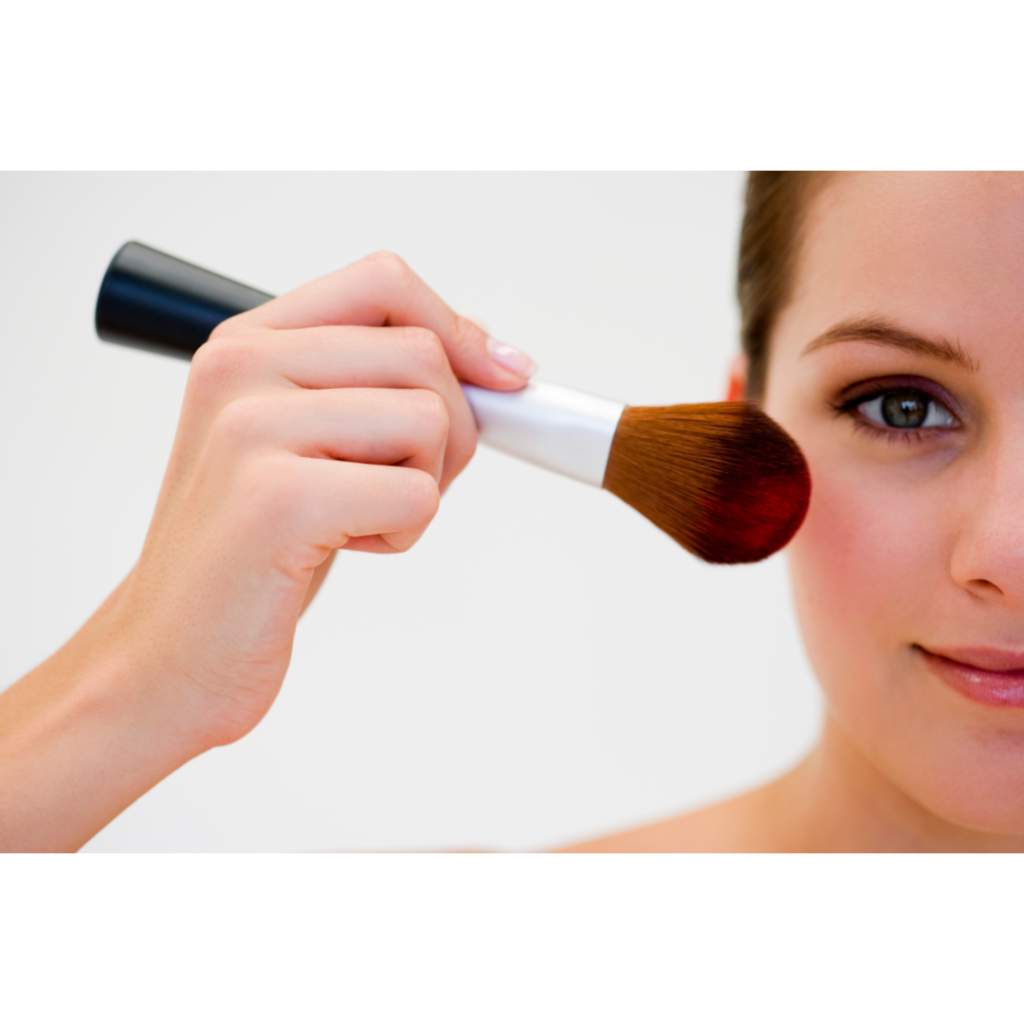- Let’s delve into the world of blushes, exploring different formulas, finishes, shades, and how they flatter various skin types.
- Finding the Perfect Blush: Matte vs. Shimmer
- Finding the Perfect Blush: It’s All About Your Undertone
- Here’s a breakdown for finding the perfect blush for different skin tones:
- Blush Application Tips for Different Skin Types
- Beyond the Basics: Blush Techniques for Different Looks
- Conclusion

Blush is one of the important parts of makeup. It adds a flush of color, enhances your natural features, and brings life to your complexion. But with countless options in the market, finding the perfect blush can be difficult.
Let’s delve into the world of blushes, exploring different formulas, finishes, shades, and how they flatter various skin types.
Powder Blush: The classic and most common type. offers versatility in application and buildable intensity. It is best for normal, oily, or combination skin.
Cream Blush: It is great for dry or mature skin, offering a dewy, natural-looking flush. Blends seamlessly and provides a moisturizing effect.
Liquid Blush: Offers a lightweight, sheer wash of color. Perfect for oily or acne-prone skin as it won’t clog pores. Can also be layered for a more intense look.
Gel Blush: Similar to cream blush, offering a long-lasting, dewy finish. May feel slightly tacky initially but dries down comfortably. Best suited for normal or dry skin.
Tinted Balm/Stick Blush: It is perfect for beginners as they are easy to blend and offer a sheer, buildable color. Great for dry lips too!
Finding the Perfect Blush: Matte vs. Shimmer
Matte Blush: It provides a natural, diffused flush of color. It is ideal for everyday wear or oily skin as it helps control shine.
Satin Blush: It offers a soft, radiant glow without being overly sparkly. Flattering for most skin types, especially normal or dry.
Shimmer Blush: It adds a touch of sparkle to your cheeks, perfect for a night out or a dewy look. However, be mindful of larger glitter particles that might emphasize texture.
Radiant/Luminous Blush: It offers a healthy, luminous finish with a subtle sheen. It is great for dry or mature skin as it adds a youthful glow.
Tip: When choosing a finish, consider the rest of your makeup. If your foundation is already dewy, a matte blush might be the better choice to balance the overall look.
Finding the Perfect Blush: It’s All About Your Undertone
Understanding your skin’s undertone is key to picking a flattering blush shade. Here’s a breakdown:
Cool Undertone: If your veins appear bluish or greenish then it’s better to look for pinks, berries, and mauves with cool undertones. Avoid warm peaches or corals.
Warm Undertone: If your veins appear greenish then it is better to look for peaches, corals, and rose golds with warm undertones. Avoid cool pinks or plums.
Neutral Undertone: If your veins appear bluish and greenish or are hard to distinguish then Consider both cool and warm-toned blushes based on the specific look you want to achieve.
Get the latest scoop first! Follow us on Facebook for our newest updates. Click Here
Master your makeup application! Learn everything you need to know about choosing the right makeup brushes. Click Here
Here’s a breakdown for finding the perfect blush for different skin tones:
- Fair Skin: Light pinks, berries, peaches, or soft rose golds.
- Light-Medium Skin: Pinks, mauves, plums, peaches, or corals.
- Medium Skin: Mauves, plums, rose golds, corals, or brick-reds.
- Olive Skin: Cool pinks, mauves, rose golds, or bronzes.
- Deep Skin: Plums, berry shades, deep reds, or bronzes.
Remember: These are just guidelines. Don’t be afraid to experiment with different shades to find what flatters you most.
Blush Application Tips for Different Skin Types
Normal/Combination Skin: Powder or cream blushes work well. Apply with a brush for a diffused look or a damp sponge for a more dewy finish.
Oily Skin: Opt for powder or liquid blushes for their oil-controlling properties. Apply with a light hand and focus on the apples of your cheeks.
Dry Skin: Cream or gel blushes provide a hydrating effect. Apply with a damp sponge to further enhance the dewy finish.
Mature Skin: Opt for cream or gel blushes that won’t settle into fine lines. Apply with a light hand and blend upwards for a lifting effect.
Bonus Tip: Apply blush after foundation and concealer but before setting powder. This allows the color to blend seamlessly and appear more natural.
Beyond the Basics: Blush Techniques for Different Looks
Natural Flush: Apply blush to the apples of your cheeks and blend upwards towards your temples.
Sun-Kissed Glow: Apply a sheer, warm-toned blush to the apples of your cheeks, bridge of your nose, and forehead for a healthy, sun-kissed look.
Sculpted Cheeks: Use a darker blush shade to define your cheekbones. Apply in a “C” shape starting from the temple and sweeping down towards the jawline.
Conclusion
The world of blush offers endless possibilities to enhance your natural beauty. By understanding blush formulas, finishes, and shades, and considering your skin type and undertone, you can create a personalized look that flatters your features. Remember, makeup is an art form – experiment, have fun, and let your blush be the finishing touch to your unique expression.
